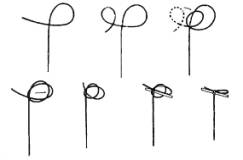 History
HistoryHarps are one of the most ancient stringed instruments. Their beautiful sound and graceful form have enticed listeners for many centuries. Going back to Ireland and Scotland�s history in 8 A.D., a harp was strung with metal and its sound box was usually carved from a single log. These harps reached their greatest use between 1000 and 1750 A.D. as a focal point of Celtic music. Later, harps were played in the royal courts of Europe with �sheep gut� string and only metal was used for its lower octaves. This gave the harpist a softer feel and less twang and resonance sound. Today, pedals have been added to accompany the key changes in orchestrated music. A wide variety of music is played on this instrument including early, classical, popular, folk, Renaissance and Celtic music.
Here is your most comprehensive guide for tuning the harp. http://www.thorharp.com/pages/tuningyourharp.htm
By Thormahlen Harps
Harps are tuned diatonically: a do re mi ½ scale like the white notes, or whole steps on the piano. As with other string instruments, a harp needs tuned periodically. Depending on its environment, it may need tuned on a daily basis, which takes approximately 10 minutes to tune all of its strings. A small black rubber tuning key is used to tune it to a chromatic tuner, or a well-developed ear. Turning the key toward you causes a flat pitch and turning the key away from you causes a sharp pitch.
All of the harps ½ sheep gut ½ nylon strings are color-coded as follows:
Red, Black or Blue
All other notes ½ Clear or white
Color-coding helps the harpist find notes more efficiently.
Re-stringing
Humidity and extreme temperature differences will cause strings to break. To replace a string, follow the diagram
below:

Also known as Celtic, Irish or folk harps, this kind usually has sharping levers on each string to raise the pitch of the string one-half step, making a sharp. It is quite challenging to play sheet music that has a number of key changes.
Usually played with an orchestra, this kind is made out of maple or mahogany wood with beautiful veneers or wood finishes added. To add extra flair, many will be decorated with gold leaf designs. There are seven pedals on every pedal harp; one pedal for each of the seven notes in the scale. Three of the pedals are controlled by the harpist�s left foot, and four by the right foot. Each pedal has three positions, which are held in place by notches in the base of the harp and by springs. These pedals move discs on the neck of the harp, which shorten or lengthen the sounding length of the strings, providing sharps, naturals and flats. By using pedals, the accomplished harpist can play very chromatic music.
There are two types of soundboards found on pedal harps, depending on their size. Some of the �-size and semi-grand pedal harps have straight soundboards. The larger surface of an extended soundboard gives the harp a larger and fuller sound with its curved shape.